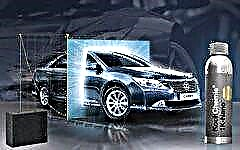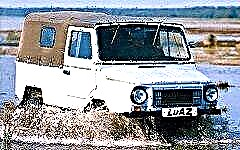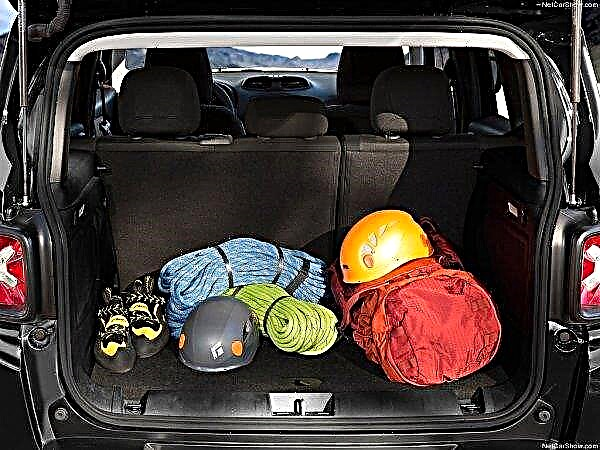
Automatic transmission is undoubtedly one of the major breakthroughs in the automotive industry. Almost all modern car builders now offer one or another variation of "automatic". A lot of today's mass-produced vehicles, even in the economy sector, have switched to automatic transmissions to improve safety and make driving easier. This type of boxes began to be preferred not only by professional drivers, but also by motorists with basic driving skills.
Despite the growing popularity of automatic transmissions, for many buyers they are still a new, unusual technology, and mistakes with such vehicles are not uncommon. Therefore, if you buy a car with automatic transmission and want to drive easily, quickly and without nerves, you should study some of the AT features.
Here are a few common misconceptions that can harm your drivetrain and reduce the overall life of your vehicle.
10 mistakes often made when working with an automatic transmission

It is clear that the automotive industry has gone through a paradigm shift with the advent of "automatic" cars. With the daily stuck in endless traffic jams, driving with a manual transmission has become extremely tedious. Automation, unfortunately, is not able to relieve us of the ubiquitous congestion, but it can reduce fatigue and make everyday travel easier.
So, you are the happy owner of an automatic vehicle, which is recognized as safer and more convenient than mechanical counterparts. But are you using your AT correctly? It is quite simple to operate, however, there are small mistakes that almost every driver makes. We're going to list the most common ones. Despite their seeming harmlessness, they often lead to serious damage and huge repair bills.
1. Using the "neutral" position in a traffic jam or while waiting for a green traffic light

Traffic jams are common in big cities and on highways. It's unpleasant to waste time in them, but it's even worse to lose money in the bargain. People tend to shift into neutral when a red light comes on, citing that this saves fuel and reduces torque converter wear. In fact, this is a delusion. Let's put an end to this myth once and for all.
Switching to neutral while waiting at traffic lights will not save you fuel. And while torque converter wear does pause, it's so low it's not worth the effort, and you do more damage to it when shifting from neutral to driving. The process itself for the automatic transmission is not particularly dangerous if we consider it as a separate case, but in the long term, with regular use, it can adversely affect the operation of the transmission and accelerate wear.
Among other things, this delusion can limit control over the car, making it impossible for the driver to quickly maneuver. In addition, cars with an automatic transmission and a start / stop system operate only when the transmission is in D mode.That is why AT should not be switched to neutral during short-term waiting (unlike AMT, which requires constant switching from lead to neutral, when the vehicle is stationary). Just keep the engine running, the shift lever on “Drive,” and your foot on the brake.
2. Saving the "drive" mode when standing still for a long time

When you just sit in the car for a very long time, the automatic gearbox remaining in position "D" can be damaged due to overheating. In such cases, it is better to just turn off the car or at least switch to the "park".
3. Driving in neutral on an incline

This is perhaps the most common mistake many people make in any car, regardless of the type of transmission. They try to save fuel by shifting the gearbox to the "N" position and coasting on inclines. However, you should be aware that when the automatic transmission goes into neutral, its special settings interrupt the oil supply, depriving the transmission of proper lubrication and maintaining the optimum temperature.
This can lead to overheating of the transmission, malfunctioning and accelerated wear. In addition, the driver loses the ability to use the accelerator pedal when necessary.
Losing the ability to control movement is the last thing you need. Moreover, the transport going down the slope does not consume as much fuel as many think, and the insignificant savings in fuel in no way compensate for subsequent repair costs.
4. Transition from "D" to "R" without a complete stop

This is a gross mistake that almost all automatic or manual vehicle drivers admit. Stopping the machine before engaging in reverse seems to be overwhelming, but failure to do so can lead to costly repairs. If the vehicle is not allowed to come to a complete stop before shifting from forward to reverse and vice versa, the gearbox can easily crash.
5. The roar of the engine before shifting gears

Life is not an eternal afterburner, and inflating revs before changing gears is a bad idea for "automatic"... Firstly, the launch function does not work that way, and secondly, it will kill the transmission. It takes time for her to react to sudden and quick actions. The abrupt upshifting from rest to high revs causes a sudden shock to the drivetrain with increased friction between internal components and ensuing massive shock to all involved components. Continuing to make this driving mistake will damage both the transmission and the engine.
The correct way to get into drive mode is to depress the brake pedal after starting the engine and make sure it idles normally. In addition, when changing modes, you should always use the button on the gear lever, if available.
6. Shifting while driving and using the automatic transmission to slow down

By forcing the drivetrain components to quickly change direction without applying the brake, you put more stress on the transmission and wear out the box at an astonishing rate. To stop the vehicle, you do not need to touch the gear lever at all. Use your brakes and let them do their job.
The clutches and belts that operate when changing modes are covered with friction material and, if used correctly, will last a lifetime, but can be worn out prematurely due to inability to cope with torque and slippage. If you change modes without stopping the car, they will have to take on additional load. Since they are not designed to operate continuously in these conditions, their lifespan will be drastically reduced.
7. Switching to the "Parking" mode before you stop moving

Even if you are in a hurry, first stop the car and then put the automatic transmission in the parking position "P". It must always be remembered that the "park" was created so that the car does not roll, but not to stop the car on the move. When moving to the "P" position, the transmission unit uses a parking "latch": the stopper enters the gear to stop the rotation of the gear wheel attached to the output shaft of the gearbox, which in turn stops the movement of the vehicle.
The wheels are also connected to the shaft, and when you block it while continuing to roll, there is a risk of damaging or even breaking the locking pin.However, some modern machines themselves will not allow you to do this.
8. Ingress of water into the transmission

Be careful with drinks in cup holders: if fluid somehow gets into the transmission, even the smallest amount can lead to the need to repair or replace it.
9. Hard start without warming up the engine

This is a gross oversight in winter. In the cold, the oil thickens and disperses more slowly. Give it a minute, allowing it to penetrate all parts of the drivetrain. This will help prevent serious internal damage.
10. Low fuel in the gas tank

The operation of an automatic transmission is largely dependent on the amount of fuel fluid. In addition to its primary function, fuel slows down wear and tear on the powertrain and other critical components, helping them stay cool and providing vital lubrication. With that being said, it should come as no surprise that wear accelerates when the tank is constantly low on fluid. Make sure the fuel tank is at least one third full.
How to work with automatic transmission
In order to avoid mistakes when working with automatic transmissions, car owners should take into account their features. Here are some guidelines.
1. Footwork

It sounds funny, but when driving any car, regardless of its type and type of transmission, you must learn how to use your own legs correctly.
In fact, everything is simple: automatic cars do not have a clutch pedal - only brake and gas. The right foot controls both pedals, while the left remains at rest. Some of us are used to a mechanical box, whose features force us to use both legs. Because of this, difficulties arise from habit. But you should not indulge yourself, you should immediately get used to using only one leg. If you are using both, you may accidentally push both pedals in at the same time, especially under stress. It hardly needs explaining what this is fraught with. It will take time to retrain yourself and get used to new sensations.
PS. Do not put your left foot on the brake pedal.
2. Launch control

Another problem if you are not familiar with automatic transmissions. When starting a car like this, there are a few things to keep in mind first. With the engine off, the gear lever must be on the letter P. And to turn it on, the car owner must press the brake with his foot and use the ignition key, then switch the box to D mode and release the brake pedal. After this, at first glance, intricate, but quickly becoming a habit procedure, you can start moving.
Many automatic transmissions are equipped with a "Launch Control" function, allowing the machine to quickly get started. This is sometimes very useful, especially during competitions or just during a gambling ride. Launch control allows the engine rpm to be increased so that the vehicle can be started at a higher speed.
Automatic machines that are not equipped with a launch control system must be manually operated to obtain the same effect. Many people try to imitate it by increasing the RPM in neutral and then suddenly switching to Drive mode, which leads to heating of the transmission and premature wear.
The correct way to do this is to keep the car in D mode by holding the brake and revving up. After they are set, the brake must be released in order to obtain the desired result. Starting in this way causes minimal damage to the "machine", but in any case harms it and reduces its service life.
3. Turns and speed changes

Maneuvering in cars with automatic and manual transmissions is the same. You simply change direction by turning the steering wheel left and right and pressing the gas / brake to accelerate and decelerate respectively.
4. Parking

One last important thing: you need to know how to park with this type of transmission and what to look for. To properly park such a car, you will need to drown the brake pedal and move the gear lever to position P, only then turn off the engine with the ignition key.
Conclusion
The automatic transmission is one of the most powerful tools in the automotive industry today. People associated with it never tire of repeating that this is a great invention that changed our lives and marked the beginning of a new era in the history of the automotive industry.
Professionals may find these tips obvious and not worth considering, but not every average driver delves into how all the components of a car work. It is not difficult to avoid mistakes when working with automatic transmission, if you understand a little.
You don't need to be an expert auto technician to know how to stay safe on the road, extend the life of an automatic transmission, and save some money on car maintenance. The trick is to change some of the ingrained habits and learn to act correctly.

|| list |
- 10 mistakes often made when working with an automatic transmission
- Using the "neutral" position in a traffic jam or while waiting for a green traffic light
- Saving the "drive" mode when standing still for a long time
- Driving in neutral on an incline
- Transition from "D" to "R" without a complete stop
- Engine roar before shifting
- Shifting while driving and using the automatic transmission to slow down
- Switching to the "Parking" mode before you stop moving
- Water ingress into transmission
- Hard start without warming up the engine
- Low fuel in gas tank
- How to work with automatic transmission
- Footwork
- Launch control
- Turns and speed changes
- Parking











